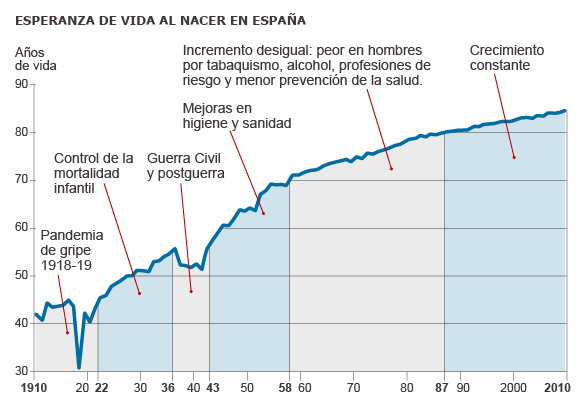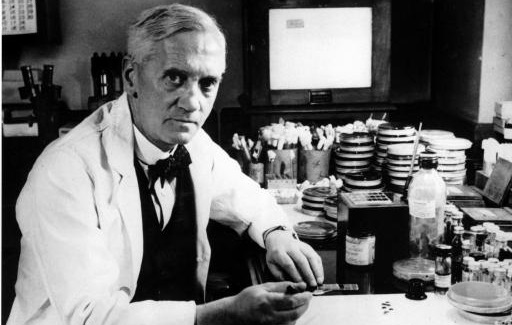A beautiful story…
In 1916, during the First World War, a military doctor was impressed by the high mortality of infected shrapnel wounds. At the end of the conflict he returned to the hospital determined to find an antiseptic capable of fighting gangrene. His name: Alexander Fleming.
Legend has it that Fleming’s lab was usually messy and that this proved to be an advantage for his most famous discovery. In September of 1928 he was conducting experiments when, inspecting his crops before destroying them, he noticed that certain mold known as Penicillium had produced a substance with antibacterial effects. Aware of the importance of the discovery, the following year he published the find in The British Journal of Experimental Pathology, and decided not to patent it to facilitate the diffusion of the antibiotic among the population. The reaction of the scientific community was scarce, believing that penicillin would only be useful for treating minor infections.
They were wrong. The rheumatic fever, osteomyelitis and fevers produced by staphylococci, among other very popular pathologies, they disappeared practically all at once between the 40s and 60s thanks to the extensive application of penicillin. Tuberculosis and syphilis also disappeared almost overnight, although in the case of tuberculosis it was not thanks to penicillin, but the streptomycin, an antibiotic discovered later (1943). These discoveries changed the perception of these diseases until then so common, precisely because they practically disappeared. Nowadays, they hardly talk about them.

The discovery of penicillin is the paradigmatic example of the spectacular advances that took place in medicine in the middle of the last century. As described by James LeFanu at “The Rise and Fall of Modern Medicine”, the rise of what came to be called “scientific medicine” caused many diseases to become practically unknown. The discovery of penicillin is a beautiful story, a story with a happy ending. In fact, it could be used perfectly for a Hollywood script.
… where some characters are missing.
However, every positive breakthrough usually has side effects that are not always beneficial. The disappearance of these diseases caused a huge impact on the life expectancy of the population, logically increasing the number of people living in a situation of chronicity. Such as was joking Marcel Proust “Nature has given us diseases of short duration while medicine has perfected the art of prolonging them”. Proust’s irony, literally false, contains a great truth. Thomas Dormandy explains it in several of the books to which he devoted his last years before dying in February 2013. Until about 100 years ago, the main concern of doctors and researchers has always been pain and symptoms. Unfortunately, the extraordinary success of the “curative medicine” of the middle of last century eclipsed the until then reigning “palliative medicine”. Because of this, today, the term “symptomatic treatment” has acquired negative connotations, as if it were a second-class medicine.
In his review of the history of medicine, Dormandy explains that as the successes succeeded, patients diagnosed with “incurable diseases” were abandoned by medical elites. The most illustrious doctors did not have much interest in spending their precious time on a medicine that could not cure. “The symptomatic treatment was simply something to entertain the doctors” (Thomas Dormandy, “El peor de los males”).
Perhaps here you can find the root of the success of the miraculous and alternative therapies that have flourished in recent years: many doctors see patients as machines to repair, and not as people who suffer the setbacks of a disease, curable or not. Feeling abandoned, patients seek on their own the remedies, sometimes desperate, that can offer anyone who shows empathy with their situation.
But success is not marked by healing. I wish it could be like this! I wish all the pathologies could be solved and we could focus all the efforts in curing. But it’s not like that. We know that there are countless incurable health problems at this time, and the role and involvement of the doctor is essential to ensure that evolution is the best possible. For example, if we suffer multiple sclerosis, Parkinson or Alzheimer’s, a realistic goal may be that the deterioration is as slow as possible. But for now it would not be realistic to propose healing.
This medicine is contextually more complex and technically less spectacular than other medicines, and yet its impact on the quality of life is immense in the −for instance, just in Spain− 7 million citizens (over 15% of the Spanish population) who suffer some type of neurological disease, of which one million of them face a neurodegenerative scenario, according to the report published by the Neuroalianza in February 2016.
To the fact of the organic disease itself must be added the psychic, family, social and work impact of a situation that we know that it can not be reversed. In these situations, the family, the social environment and support organizations based on solidarity play a fundamental role, which together with the doctor and obviously, the sick person themselves, are those who hold the key to the best possible evolution.

1 Comment